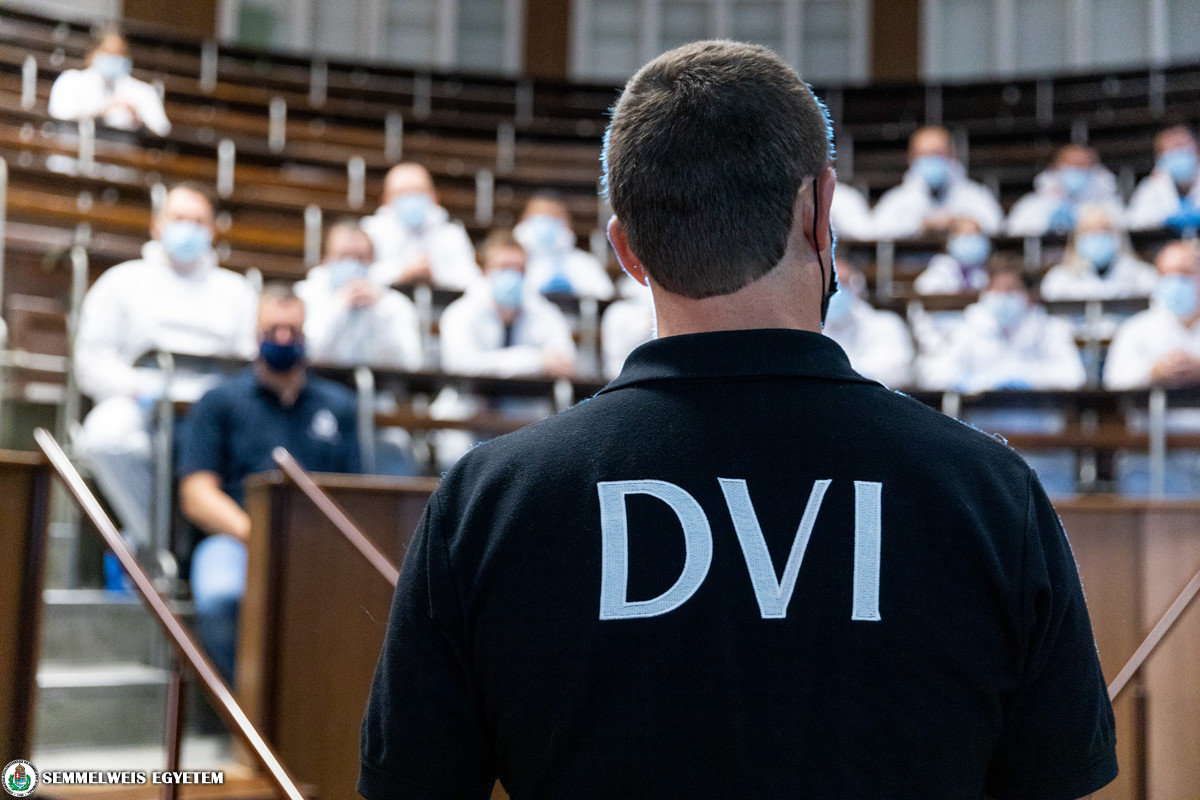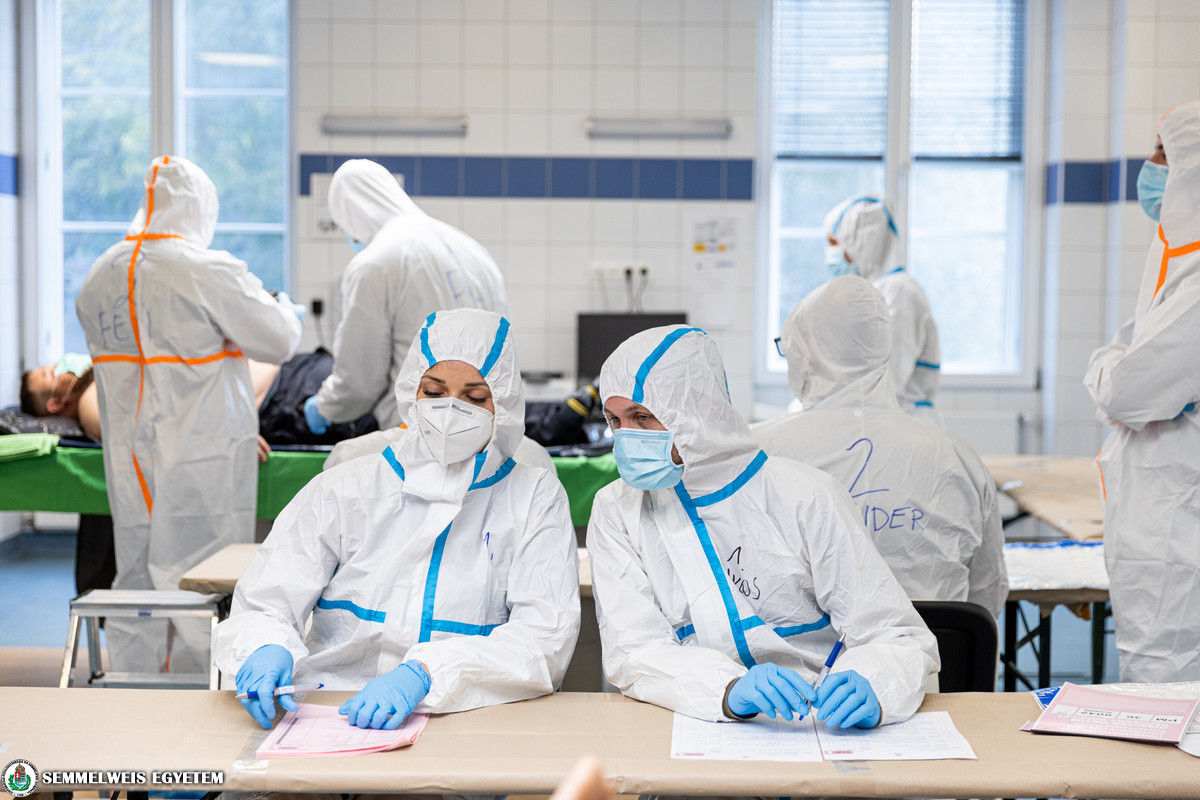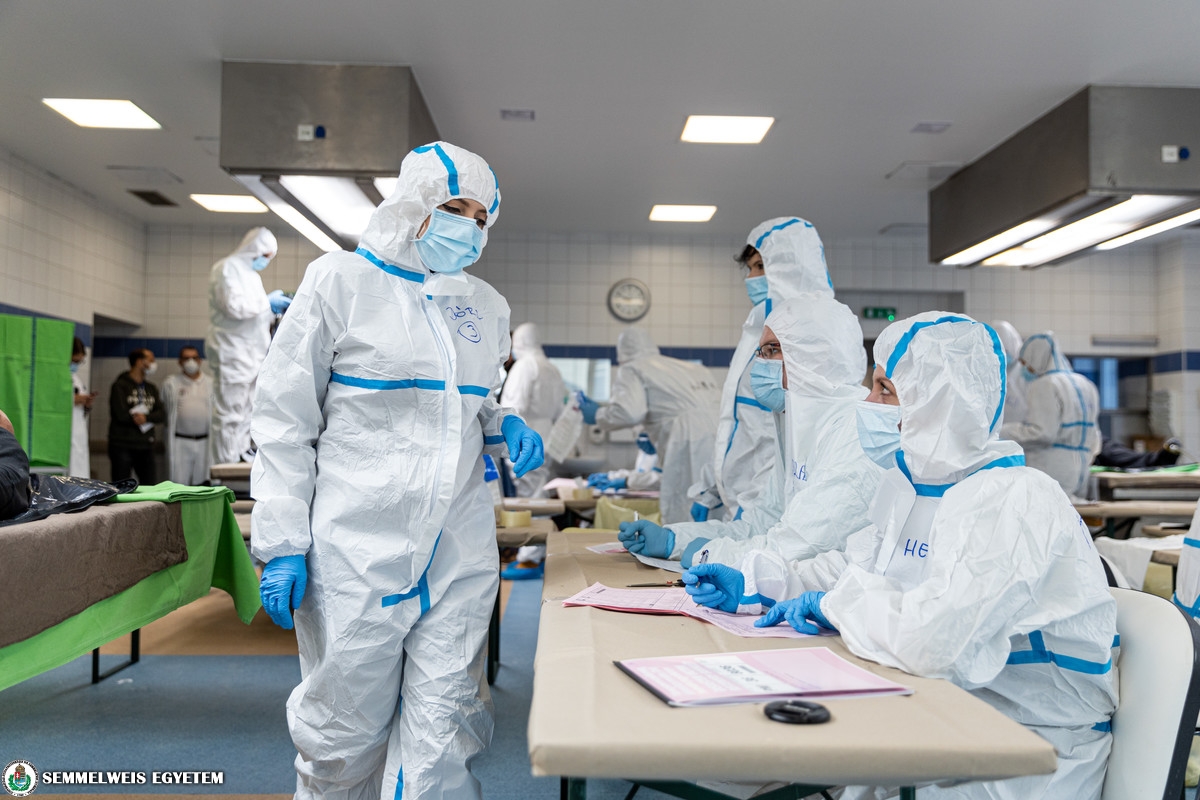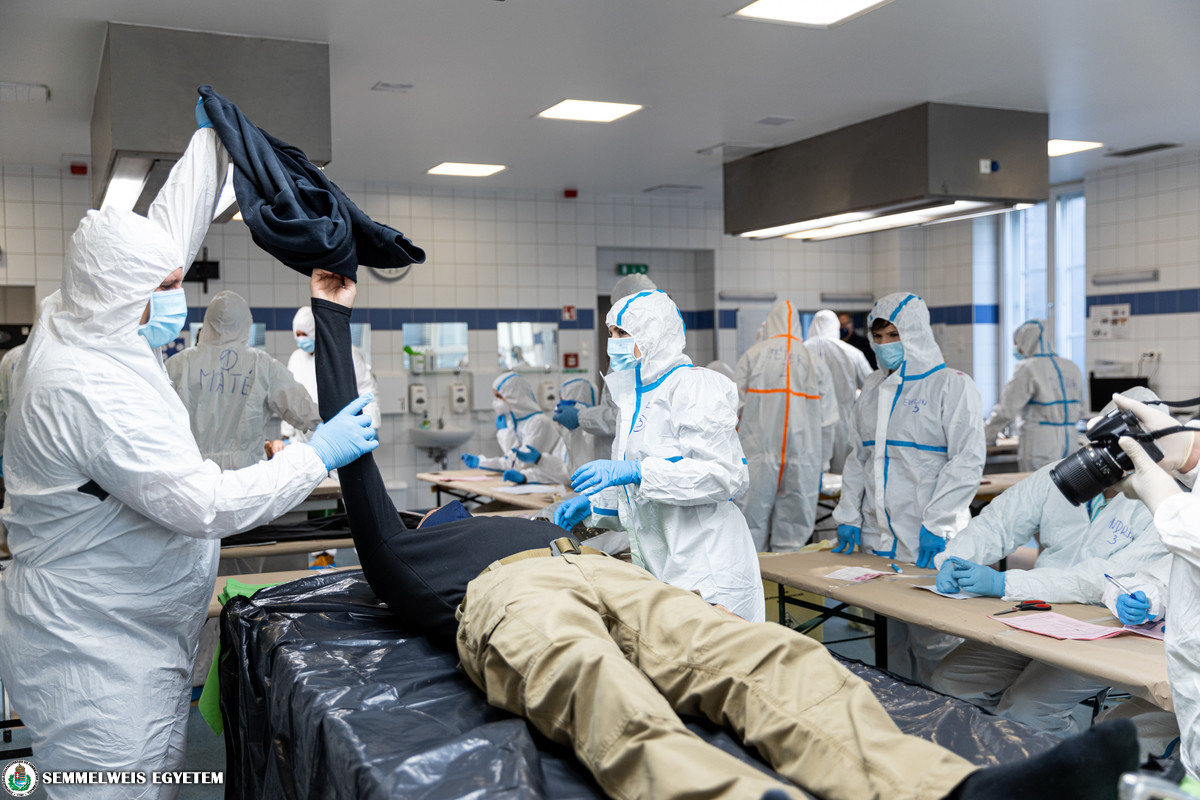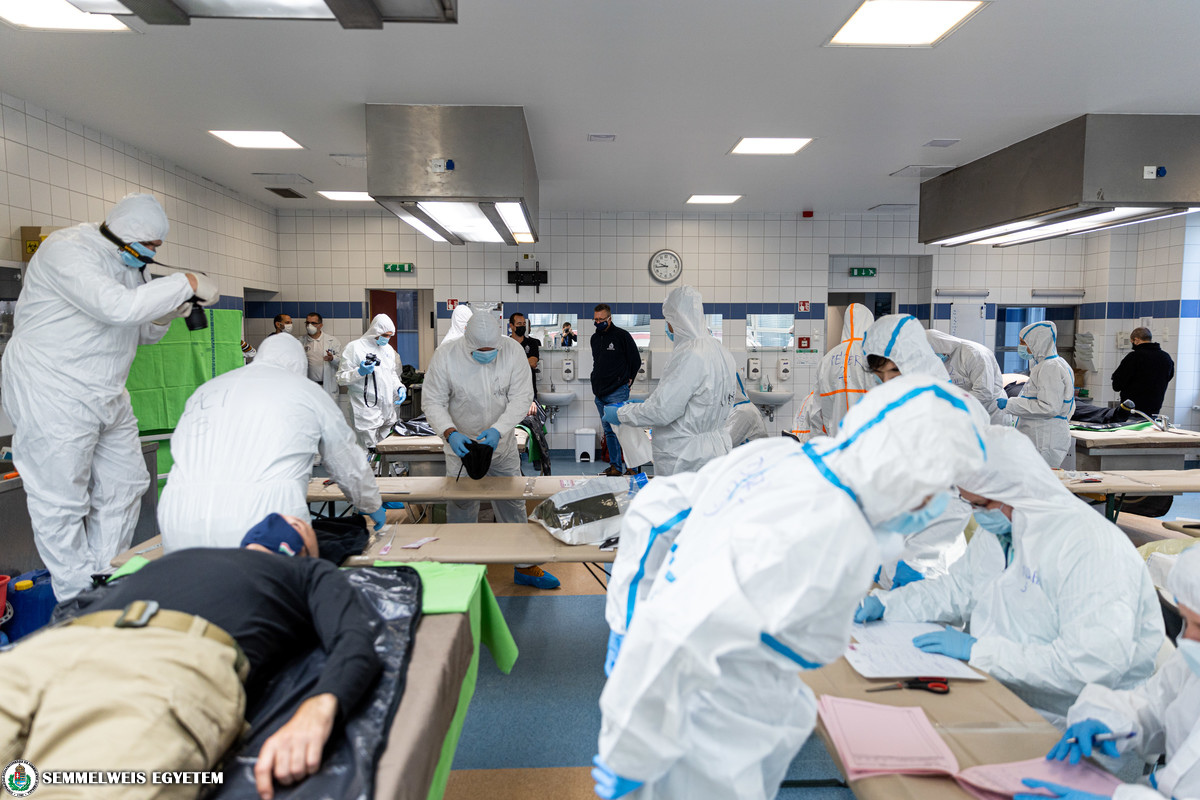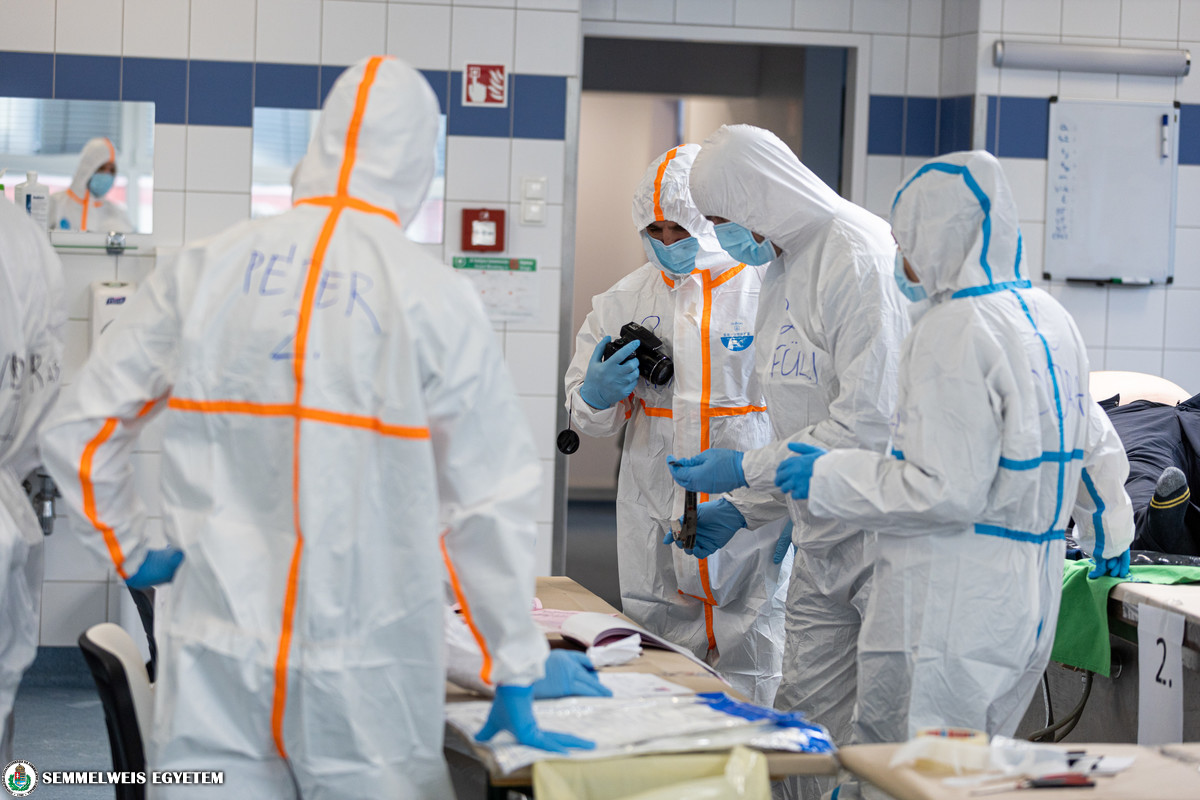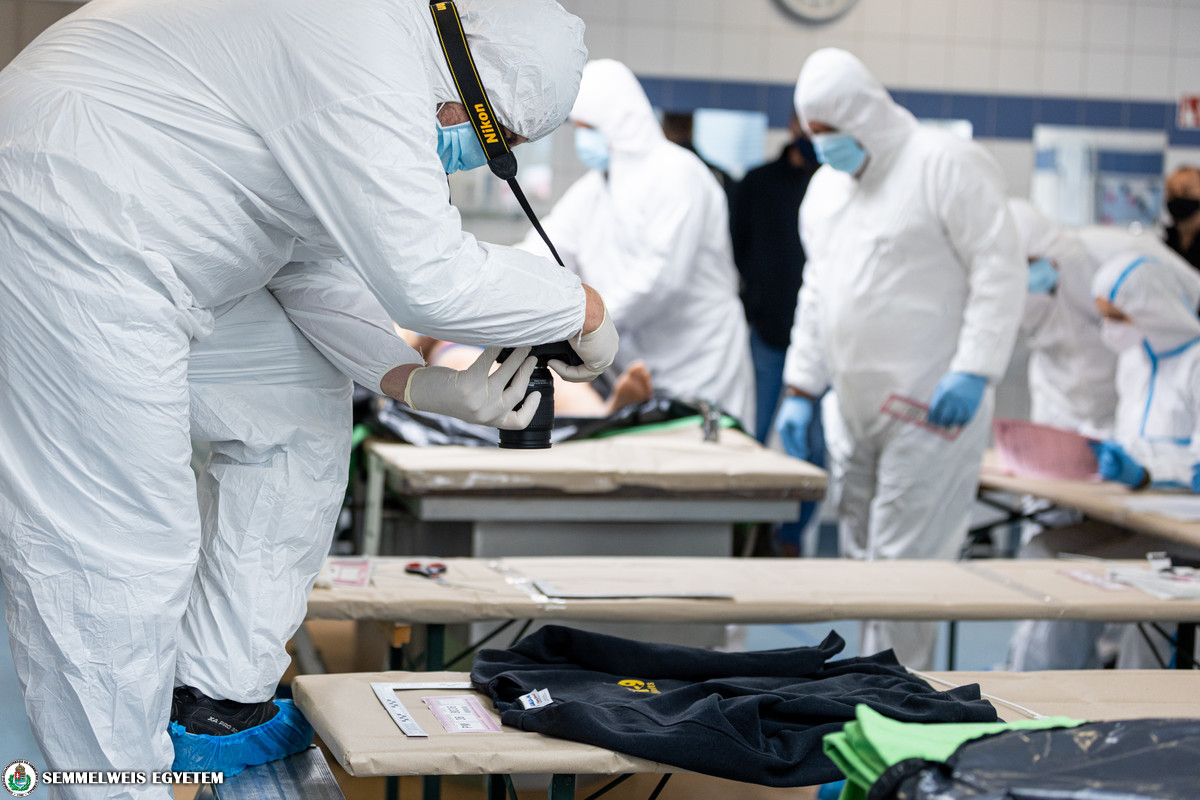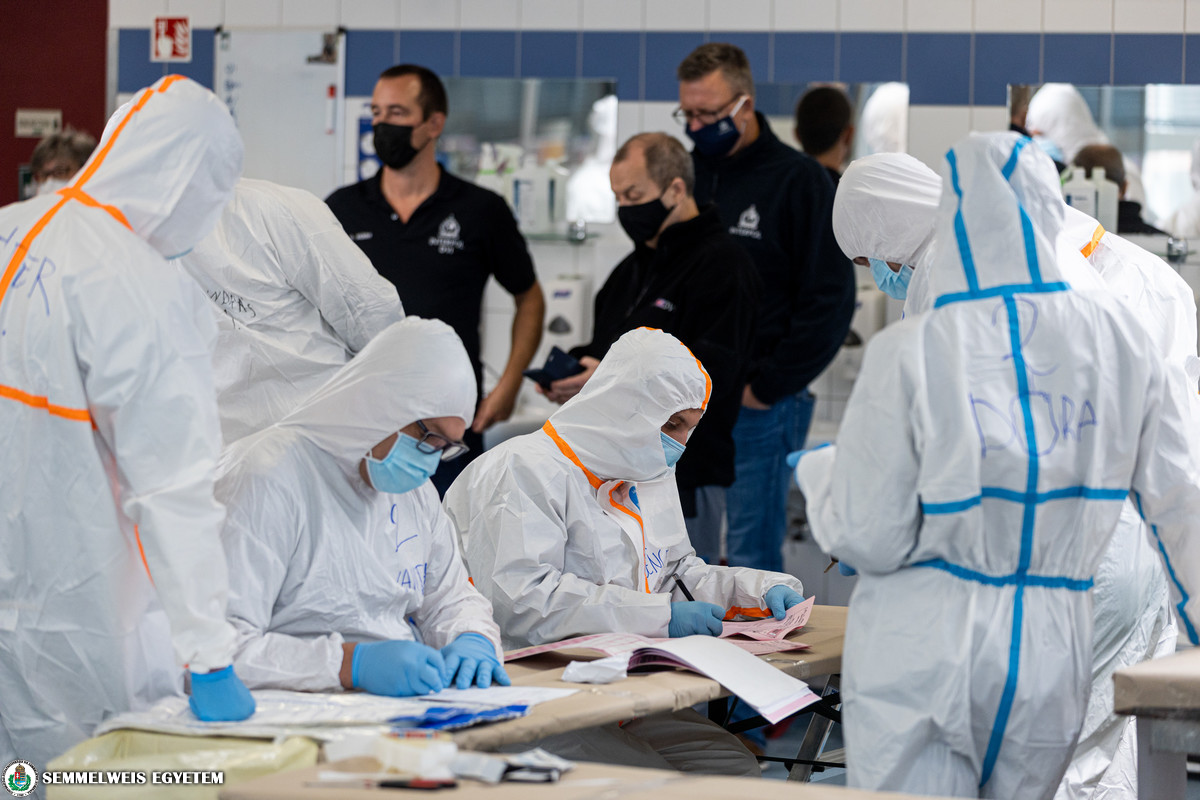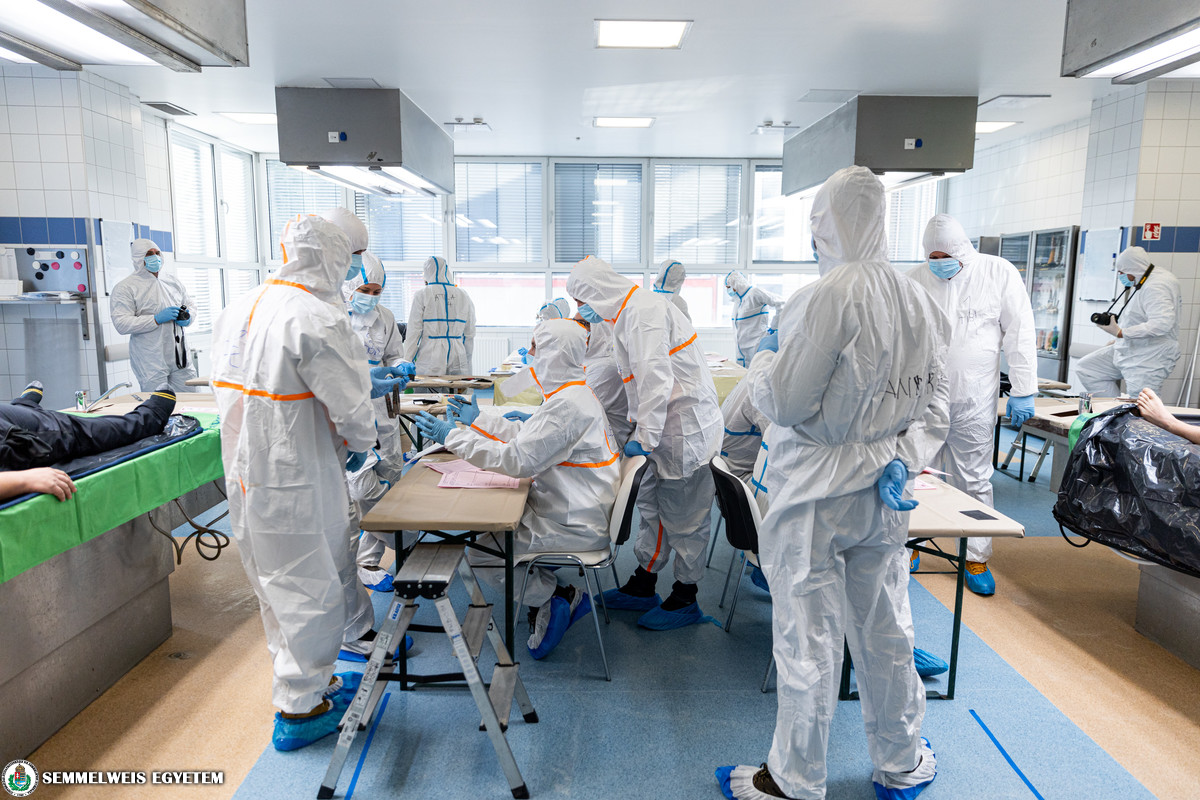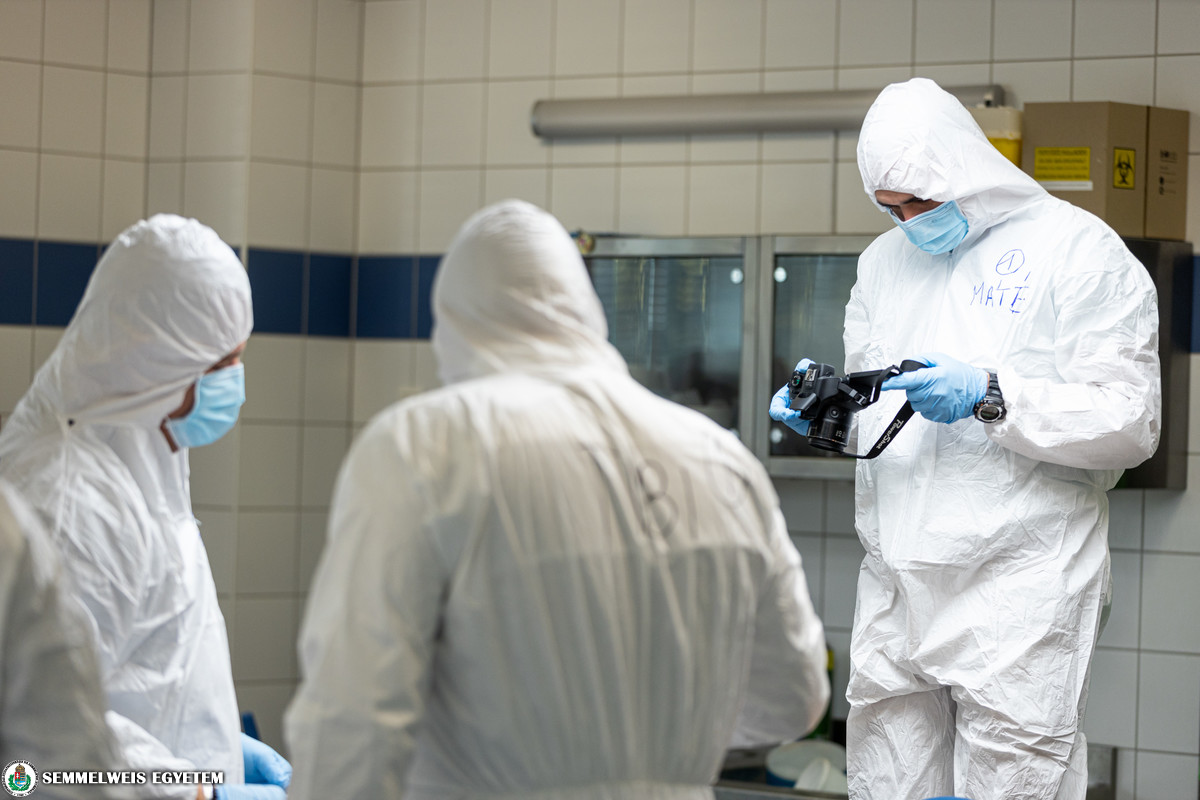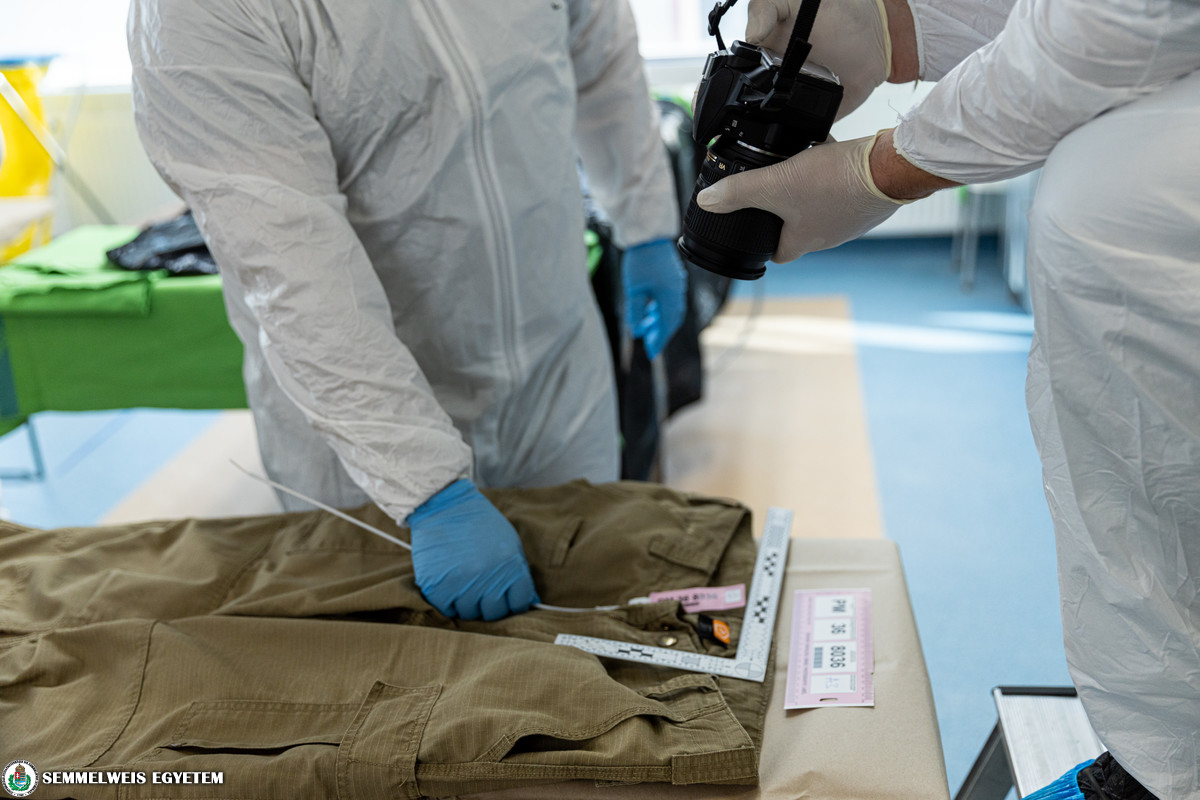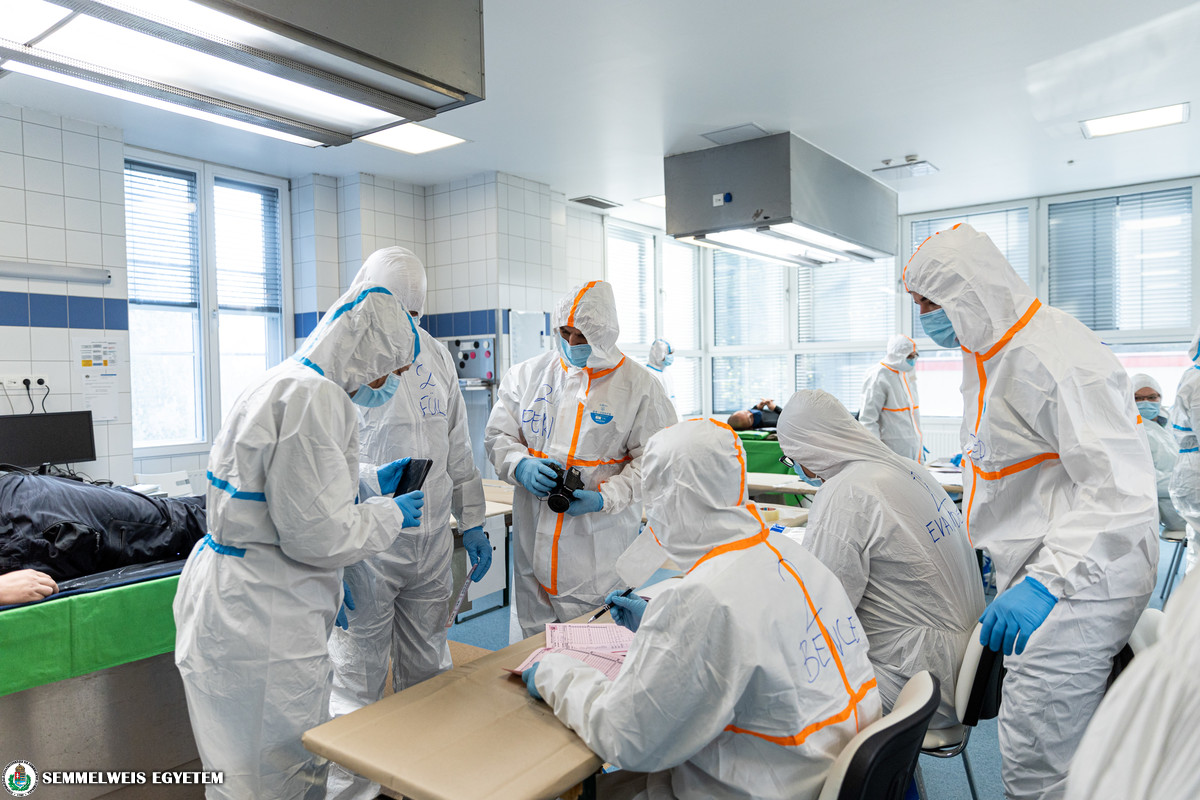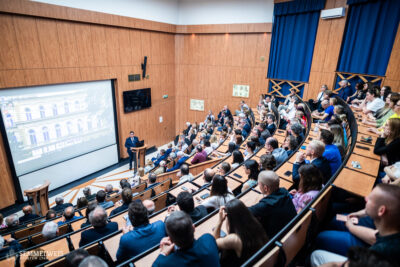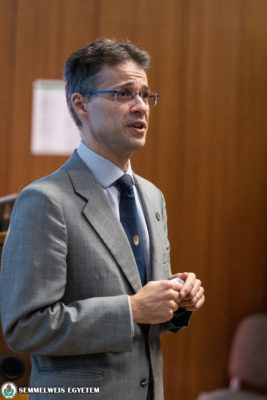 The identification of victims following mass disasters is a very specialized field of forensic medicine, requiring only a small number of trained professionals in each country. Therefore, their training is carried out at an international level, under the coordination of Interpol and based on its protocol.
The identification of victims following mass disasters is a very specialized field of forensic medicine, requiring only a small number of trained professionals in each country. Therefore, their training is carried out at an international level, under the coordination of Interpol and based on its protocol.
“I am very happy that Semmelweis University can host this international training and I am sure that our university and the Department of Forensic Medicine are an excellent place to expand your knowledge in this field”, said Dr. Alán Alpár, Vice-Rector for International Studies, opening of the three-day training.
Dr. Klára Törő, Director of the department, welcomed nearly two dozen newcomers to the training course, followed by a short address by Howard Way, leader of the Interpol DVI training, and Mark Mülder, coordinator of Interpol’s DVI Operations Unit. Howard Way recalled that this is the second such training in Hungary, the first having taken place in 2018, also in cooperation with Semmelweis University.
“Shortly after that, in early 2019, there was a boat disaster on the Danube, where the knowledge acquired here had to be put into practice. The feedback from the participants was that our trainees were able to contribute a lot to the victim identification efforts of that tragedy,” Howard Way pointed out.
He added that Hungary is much better prepared in this area thanks to the training courses, which they hope will continue in the future.
The Hungarian Victim Identification Service (DVI Hungary) within the Hungarian Police deals with victim identification work following mass disasters, which includes PM (post mortem, i.e. detailed documentation of the bodies) and AM (ante mortem, i.e. taking data and samples from family and friends of the persons presumed to be involved) teams. DVI is a standing committee of Interpol and is also the name of the international victim identification protocol and methodology. During the three-day theoretical and practical training, participants were able to learn and practice some of the working phases of mass victim identification at a set external crime scene and in the autopsy room of the Department of Forensic Medicine of Semmelweis University. During the exercise, expert examinations were carried out on living persons, without cadavers. The participants of the training will receive an international DVI certificate.
“Semmelweis University provided the location for the training, and our own staff also participated as trainees, while we also actively contributed to the organization of the training and provided the medical background,” Dr. Lóránt Magyar, official responsible for DVI at the Department of Forensic Medicine, told our site. The participants in the training included staff from Semmelweis University, the National Bureau of Investigation, the Hungarian Police and the National Center for Expertise and Research.
Tamás Deme
Photo: Attila Kovács – Semmelweis University
